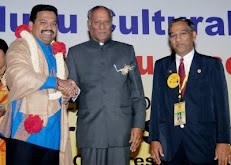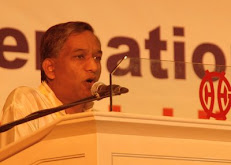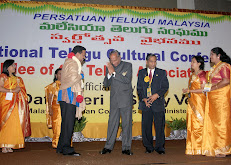Telugu
Religion
The vast majority of Telugus are Hindus. There are also some Telugus who are Christians or Islam. Each village has its main temple—often dedicated to a great Hindu god, usually Rama or Siva—as well as small shrines to numerous village deities, most of which are female.
Religion
The vast majority of Telugus are Hindus. There are also some Telugus who are Christians or Islam. Each village has its main temple—often dedicated to a great Hindu god, usually Rama or Siva—as well as small shrines to numerous village deities, most of which are female.
Preeminent among the regional shrines in the Telugu country is the temple of Sri Venkateswara in the town of Tirupati, Andhra Pradesh , a major pilgrimage centre.
Religious Beliefs. Hinduism lacks a centralized ecclesiastical hierarchy or unified authority officially defining doctrine. The specifics of religious customs vary widely from one locality to another and even between different castes in the same village. Among the major types of ritual are family Ceremonies, caste ceremonies, and village ceremonies. In addition the range of deities worshiped varies between localities. Many deities are associated with particular places or specialized powers or seasons. But a unifying theme is a system of worship called puja in which offerings are presented to a deity in return for protection and help. The offerings imply a subordination by the worshipers and include the receiving back of part of the items offered—after their spiritual essence has been partaken of by the deity. Overarching the host of specific deities is a transcendent divinity, bhagavan or devudu, responsible for cosmic order. People conceive of this deity in personified forms such as Vishnu and his associated circle of gods—including his ten incarnations, among whom are Rama and Krishna, and their various female consorts, such as Lakshmi, Sita, and Rukmini. Shiva and gods associated with him include his sons Ganapati and Subrahmaniam and his wife Parvati. Settlements, villages or towns, have a tradition of female "village deities" (grama devatas) who protect their localities as long as they are properly propitiated but cause illnesses if they are not. Ghosts of deceased humans, especially those of people who died untimely deaths, can hover about and interfere with people, as can other malevolent forces such as inauspicious stars and evil spirits. These thwart people's plans or render their children ill.
Religious Practitioners. A person acting as the officiant in a temple, conducting or assisting the worship, is known as a pujan, or priest. Brahmans serve as priests in temples to deities associated with the scriptural deities known throughout India, such as Rama, Shiva, or Krishna. But members of many other castes, some of quite low social rank, act as priests for a wide range of lesser deities.
Ceremonies. There is little uniformity in the celebration of festivals across the Telugu country. Each region presents a kaleidoscopic variation of interpretations and emphases on common themes. In the northeast, Makara Sankranti is the principal harvest festival. It features castes worshiping the tools of their trades and a period of fairs featuring elaborate night-long operatic drama performances. In the northwest, Dasara and Chauti are the festivals during which castes worship their implements. Farther south, near the Krishna River, Ugadi is a time when artisans worship their tools. All regions have festivals that honor Rama, Krishna, Shiva, and Ganapati.
Village goddess festivals, celebrated on dates unique to individual settlements, are also among the most elaborate celebrations of the year. These rituals—entailing the offering of chickens, goats, or sheep—mobilize extensive intercaste cooperation to ensure the health of the whole community. Also important in the worship of village goddesses is the practice of making vows to achieve specific personal benefits, such as the curing of ailments or finding of lost objects. Periodically when emergencies arise—in the form of epidemics, a spate of fires, or sudden deaths—these goddesses are believed to require propitiation.
Life-cycle rituals vary greatly between castes and regions. All serve to define social statuses, marking the transitions Between immaturity and adult (married) status, as well as Between life and death. They also serve to define circles of interdependent relatives and castes. Weddings stand out as the most elaborate and significant life-cycle rites. They are highly complex, involve huge expenditures, last several days, and entail the invitation and feeding of large numbers of guests. Funerary rites are also highly significant, defining the lineal relatives who share ritual pollution caused by the death of a member. In addition, they mark social statuses by treating the body of a man differently from that of a woman (cremating it face up or face down, respectively) and by disposing of the body of an immature child differently from that of a married adult (by burial or cremation, respectively).
Copyright © 2008 - Advameg Inc.



.jpg)
.jpg)
.jpg)
.jpg)
.jpg)


No comments:
Post a Comment